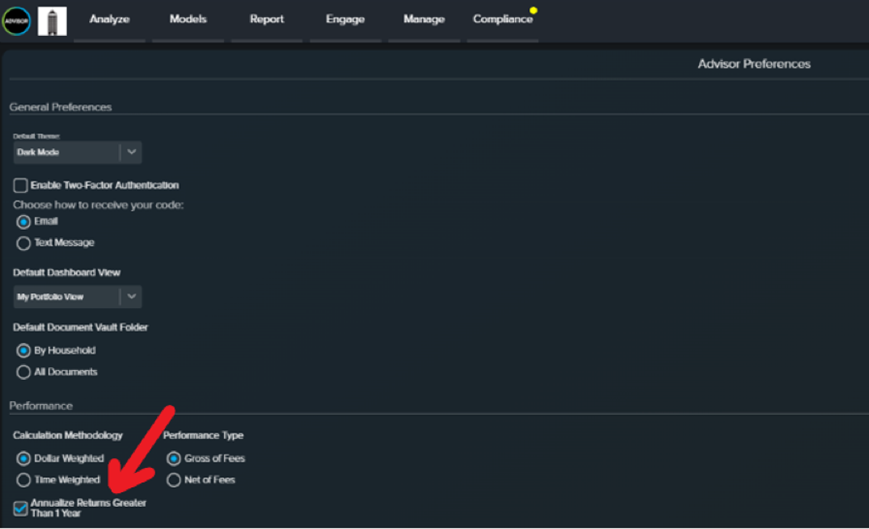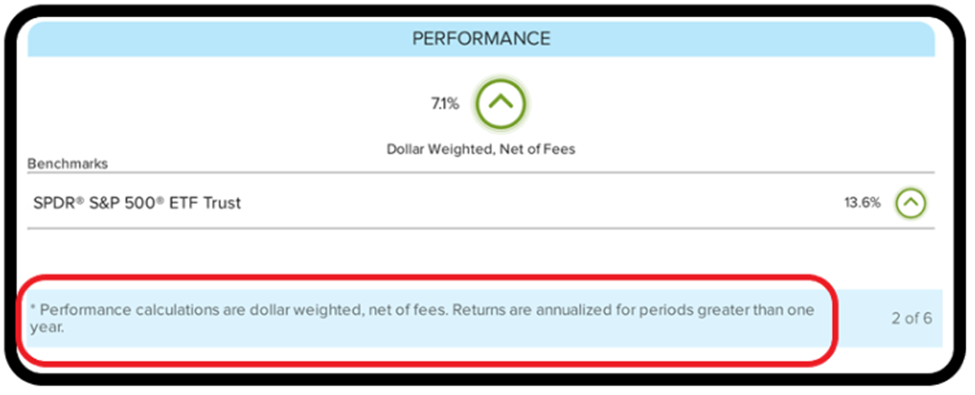CircleBlack’s Performance Reporting
CircleBlack’s Performance Reporting functionality provides clear options for calculating and displaying both annualized and cumulative returns. This allows advisors to tailor reports to the specific understanding levels and needs of different clients, ensuring clarity and precision in communication.
Tailoring Reports through the Advisor Portal
At the heart of CircleBlack’s platform is the Advisor Portal, where the selection between cumulative and annualized performance can be easily configured.
This portal not only offers a high degree of customization with widgets like Performance and Performance by Asset Class but also ensures that advisors can present performance data in the most relevant context to their clients:

Performance changes may be viewed on the following pages:
- Portfolio Overview
- Multi-Period Performance
- Accounts
- Asset Class Performance
- Asset Class Detailed Performance
- Holding By Account
- Holding By Asset Class
- Top & Bottom Performers
- Top & Bottom Contributors
Strategic Application in Reporting
CircleBlack Performance Reporting provides options for calculating and displaying annualized vs. cumulative returns.
When selecting Cumulative Performance:
- Returns are calculated on a cumulative basis for all reporting periods, including for periods less than one year.
When selecting Annualized Performance:
- For periods less than one year, returns are calculated on a cumulative basis.
- For periods greater than one year, returns are annualized.
Periods under one year always show the cumulative performance. For periods greater than one year, you can select performance reports to display returns as annualized.
As of April 2024, CircleBlack has updated clarification language within report footers and the Legal Disclaimers section to enhance comprehension of these two reporting methods. This initiative aims to streamline the review process of Performance Reports, significantly reducing client inquiries and bolstering the advisor-client dialogue.




